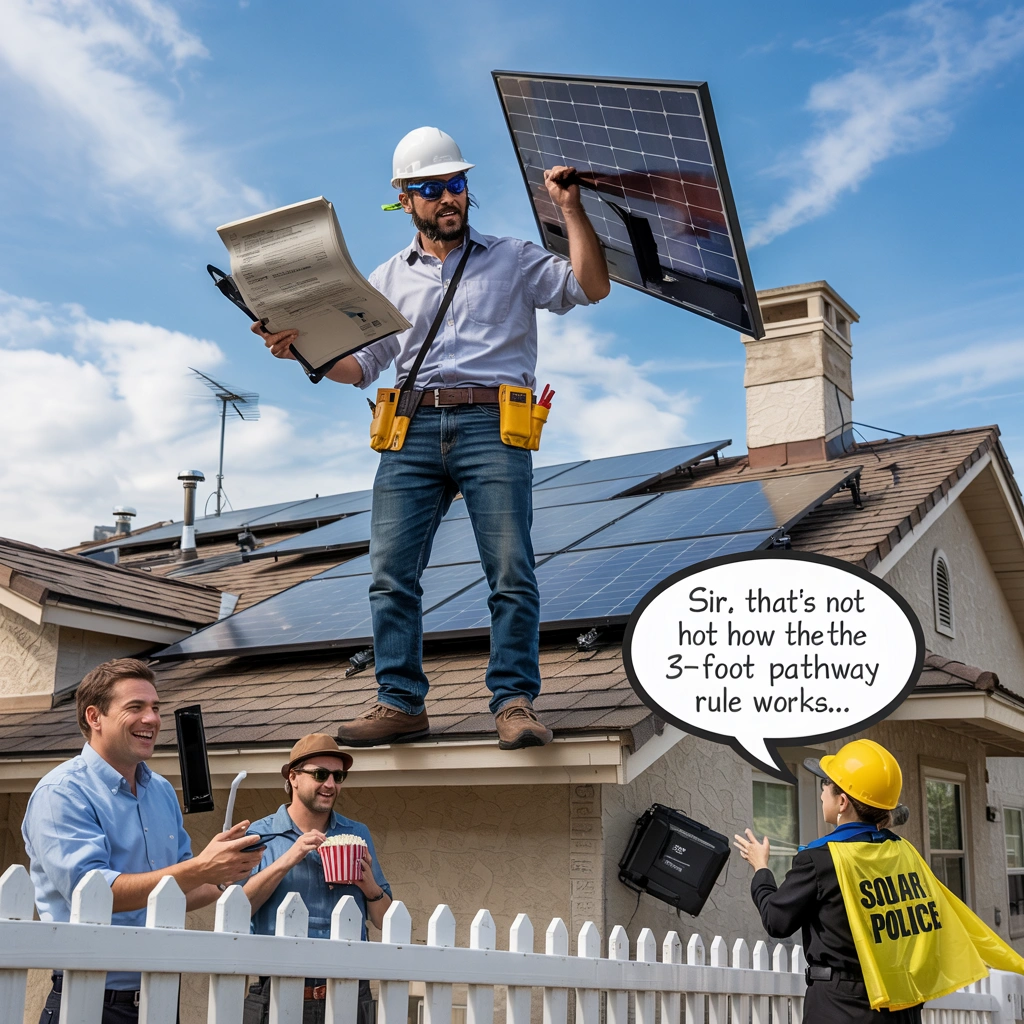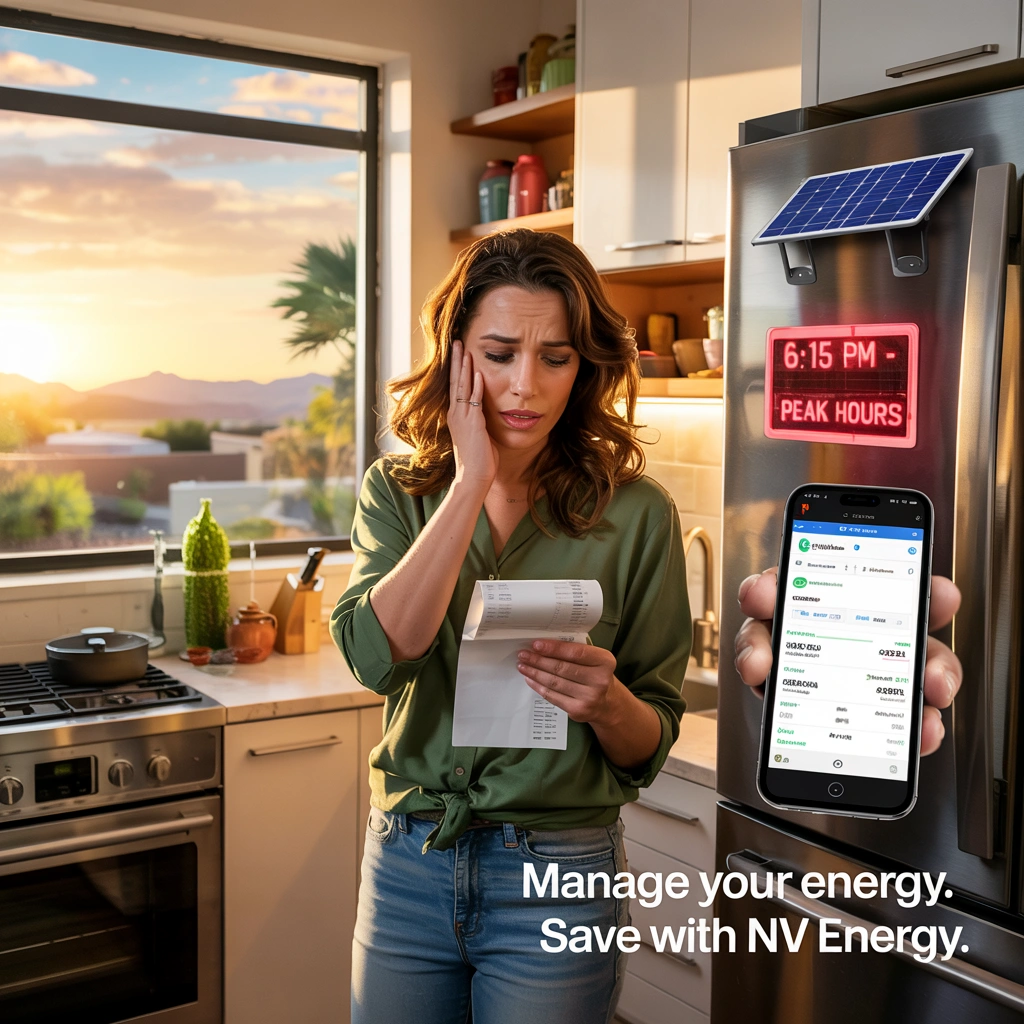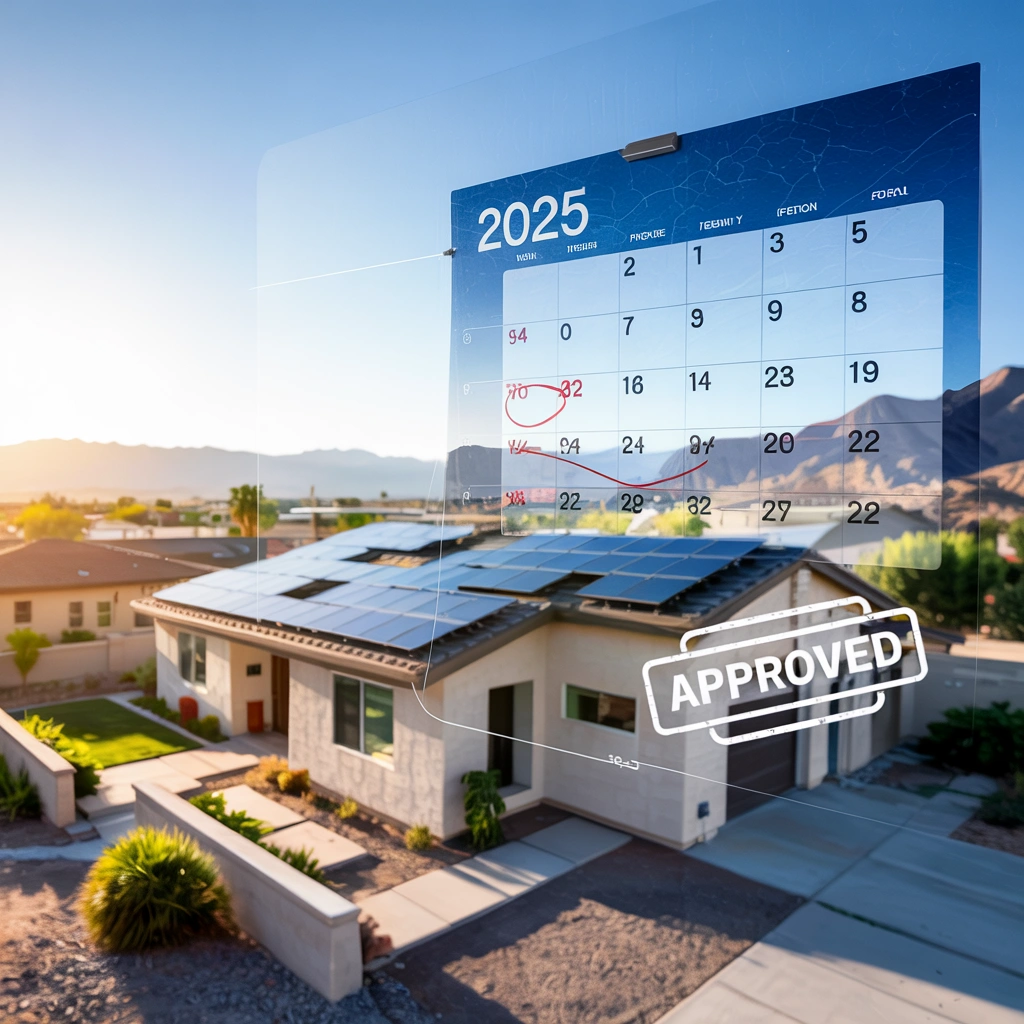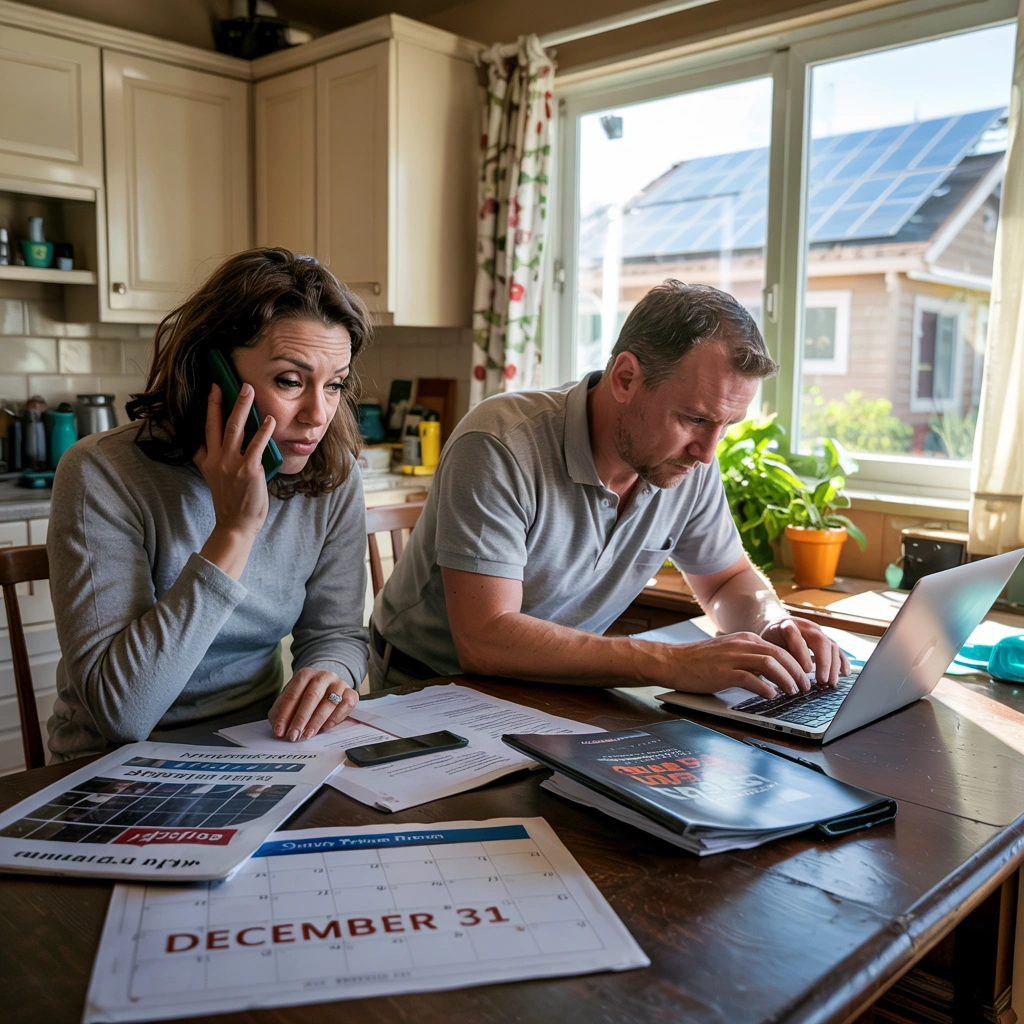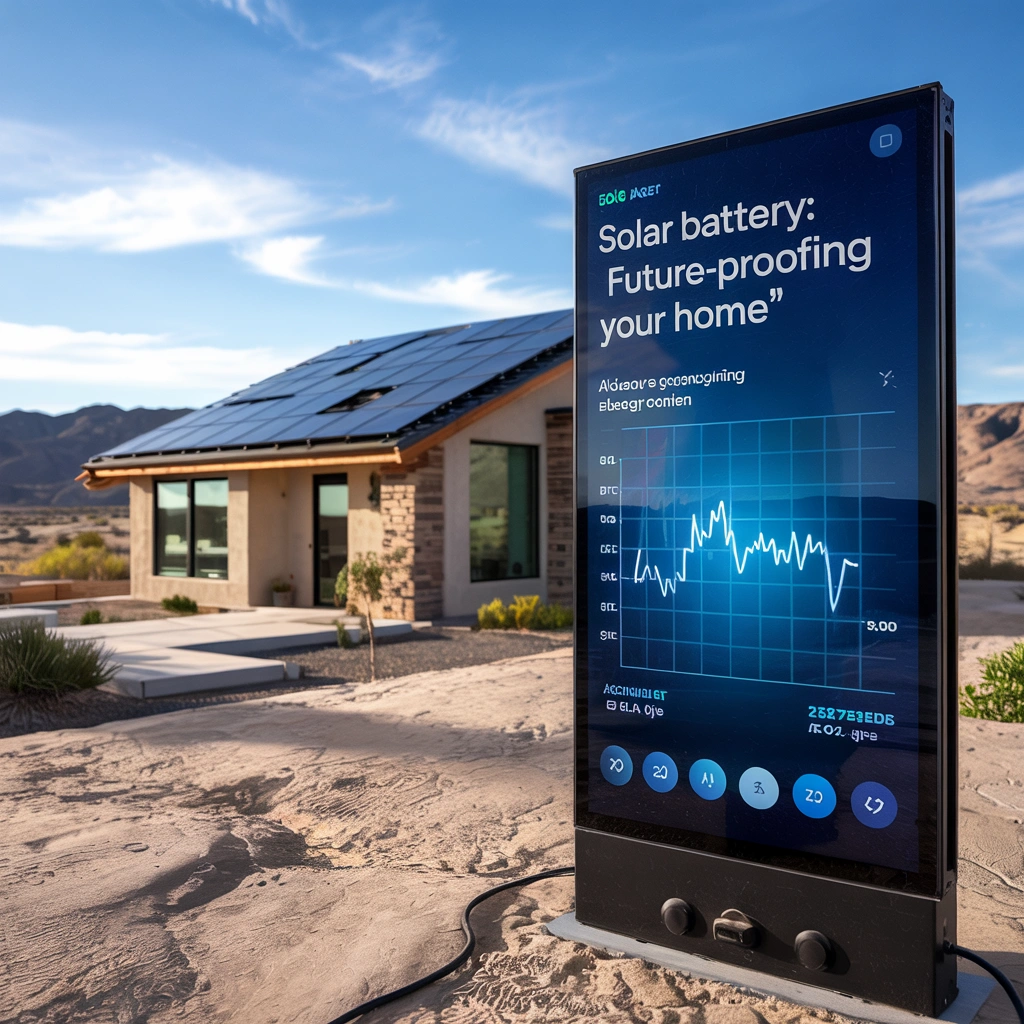
Summary: Nevada homeowners are facing a hidden threat to their electricity bills that most people don’t see coming. AI data centers are driving energy demand up 40%, but there’s one proven strategy that’s helping families slash their monthly costs by over $200.
Key Takeaways
- Solar battery storage systems shield Nevada homeowners from unpredictable energy costs caused by AI data centers and rising electricity demand
- Battery systems can reduce monthly electricity bills by 45-65% on average by storing power during off-peak hours and using it during expensive peak rate periods
- Nevada homeowners can access federal tax credits (30%) to significantly reduce upfront battery installation costs
- Smart battery integration with home automation systems creates predictive energy management that adapts to weather patterns and usage habits
- Professional installation typically takes 5-6 weeks, and proper system sizing varies from 10-30 kilowatt-hours, depending on home size and backup power needs
Nevada’s energy landscape faces unprecedented challenges as artificial intelligence drives massive increases in electricity demand. Data centers powering AI applications are requesting nearly six gigawatts of electricity capacity in the Reno area alone over the next decade—requiring a 40% increase in the state’s power sector capacity. This surge threatens to destabilize utility costs for everyday homeowners who already face rising bills in one of America’s fastest-growing states.
AI Data Centers Push Nevada Energy Demand to Breaking Point
The numbers tell a stark story about Nevada’s energy future. AI is projected to account for 40% of global data center power demand by 2026, with direct impacts hitting residential electricity rates. The average residential electricity rate in the United States increased 6.5% between May 2024 and May 2025, with AI-driven data centers contributing significantly to this rise. Industry analysts warn that consumers and small businesses could see their electricity bills increase substantially by 2029 due to surging energy demand from AI data centers.
Nevada’s unique position as a business-friendly state attracts tech companies seeking locations for power-hungry AI operations. A dozen data center projects in the Reno area alone have requested nearly six gigawatts of electricity capacity over the next decade. This massive demand requires utilities to build new infrastructure, upgrade transmission lines, and secure additional power sources—costs that ultimately flow to residential ratepayers through higher monthly bills.
Understanding long-term energy investment strategies beyond traditional incentives becomes vital for Nevada homeowners facing these mounting pressures. Solar battery storage offers a proven path to energy independence that protects against volatile utility costs while providing reliable backup power during increasingly common grid disruptions.
Solar Battery Storage: Your Shield Against Peak Rate Chaos
Solar battery storage systems work like giant phone chargers for entire homes, capturing surplus energy when electricity rates are low and releasing stored power during expensive peak hours. This simple concept delivers measurable savings every single day while protecting homeowners from unpredictable utility rate structures. Modern battery systems integrate seamlessly with existing solar panels or function independently for homes without solar installations.
The technology operates automatically without homeowner intervention. Solar panels generate electricity during Nevada’s abundant sunny hours, with excess power flowing into battery storage instead of back to the grid. When evening arrives and utility rates spike, stored energy powers the home’s electrical needs. If additional power is required beyond battery capacity, the system draws from the grid at lower off-peak rates rather than expensive peak pricing.
How Battery Systems Slash Peak Rate Exposure
Nevada utility companies implement time-of-use pricing that charges dramatically different rates throughout each day. Peak hours typically cost significantly more than off-peak periods, with rates varying based on specific utility plans and seasonal demand patterns. Battery power helps maintain more consistent energy costs regardless of time.
NV Energy offers time-of-use rate plans that reward customers with lower energy rates during off-peak hours, making battery storage even more valuable. Solar batteries allow homeowners to store excess solar energy generated during off-peak hours and use it during peak hours when electricity rates are higher. This rate arbitrage strategy can reduce peak rate exposure by 70% or more for properly sized systems.
Storm season brings additional benefits beyond cost savings. When power lines fail during Nevada’s severe weather events, batteries keep essential systems running while neighbors lose power completely. Refrigerators stay cold, medical equipment continues operating, and security systems remain active during extended outages that are becoming more frequent as extreme weather intensifies.
Smart Integration with Existing Home Systems
Modern battery storage systems connect with home automation technologies that many Nevada families already use. EcoFlow whole-home battery backups can be charged through existing solar panels, the grid, or even a gas generator, offering exceptional flexibility for different installation scenarios. These systems learn daily energy patterns and predict when power will be needed most throughout each day.
Smart thermostats communicate directly with battery systems to pre-cool homes using stored energy before peak rates begin. This approach reduces cooling costs by 40% during Nevada’s brutal summer months when air conditioning represents the largest portion of electricity bills. The integration happens automatically through predictive programs that analyze usage data over time and find additional savings opportunities.
Electric vehicle charging becomes affordable rather than expensive when batteries power cars overnight using stored solar energy. Families avoid both peak charging rates and rising gasoline prices simultaneously. Weather data integration adjusts storage patterns for incoming storms, while grid communication prevents power quality problems that can damage sensitive electronics.
Nevada Incentives Available Plus 30% Federal Tax Credit
Nevada homeowners can access substantial financial incentives that dramatically reduce solar battery installation costs. The federal Investment Tax Credit allows homeowners to claim 30% of the cost of a solar-plus-storage system, with potential savings varying based on total system cost. This credit applies to the total system cost, including equipment, installation labor, and associated electrical work.
While NV Energy previously offered an upfront battery storage incentive for residential customers with up to $3,000 available for customers on time-of-use rate plans, this program is not currently accepting new applications. Homeowners should focus on the federal tax credit as the primary incentive available. The utility program specifically targeted customers who could maximize benefits through rate arbitrage strategies.
Financing options spread costs over manageable monthly payments that often cost less than the current utility bill increases. Many Nevada installers offer zero-down financing programs with competitive interest rates. The monthly payment for a properly sized system frequently runs lower than the monthly savings generated by peak rate avoidance and solar energy storage.
Real Nevada Homeowner Results: $200+ Monthly Savings
Real Nevada families demonstrate substantial returns from properly installed battery systems. Most Nevada households achieve monthly bill reductions between 45% and 65% on average through strategic energy storage and peak rate avoidance. The savings vary based on home size, energy usage patterns, and system capacity, but documented results show consistent financial benefits.
Peak rate avoidance typically saves $80 to $150 every month for average-sized homes. Time-based rate optimization adds another $40 to $90 in monthly benefits. Backup power value prevents $200 to $500 in losses per outage avoided when batteries keep refrigeration, security systems, and essential equipment running during grid failures.
Henderson Family Cuts Bills from $340 to $140
The Johnson family in Henderson installed a 15-kilowatt-hour battery system that cut their monthly electricity bills from $340 down to $140. Their system cost $15,000 before incentives and will pay for itself in under six years based on current savings. The family tracks exactly how much money their battery saves each day through mobile apps that show real-time performance data.
Their results demonstrate typical savings patterns for Nevada homes. Summer cooling costs dropped dramatically when the battery pre-cooled their house using stored solar energy before expensive peak rates began. Winter heating costs stayed manageable because the battery provided power during evening peak hours when heating demand was highest.
Mobile apps show system performance in real-time on phones and tablets, allowing the Johnson family to track energy production, storage levels, and daily savings. Alerts notify users about any maintenance needs before problems develop, ensuring maximum system efficiency over the battery’s 10-15 year lifespan.
Battery Systems Boost Property Values and Buyer Appeal
Property values increase when homes have battery installations, with energy storage systems becoming increasingly attractive to potential buyers. Houses with energy storage may sell faster than similar properties without batteries, while buyers pay premium prices for energy-independent homes that protect against rising utility costs. Real estate professionals report growing buyer interest in homes with energy management systems.
The value proposition extends beyond immediate financial returns to long-term investment protection. As utility rates continue climbing due to AI-driven demand, battery-equipped homes become more valuable compared to properties dependent entirely on grid power. Energy independence represents a tangible asset that maintains relevance regardless of future utility rate structures.
Potential Insurance Discounts for Backup Power
Insurance companies increasingly offer discounts for homes with backup power systems that reduce property damage risks during outages. Families stay safer during emergencies when batteries keep sump pumps, security systems, and refrigeration running. Property damage from power outages drops considerably when backup systems maintain essential home functions.
Homeowners may be eligible for insurance premium reductions for homes with whole-house backup power capabilities. The discounts recognize that battery systems prevent water damage from failed sump pumps, food spoilage from refrigeration loss, and security vulnerabilities from disabled alarm systems during extended outages.
Choosing Your Battery System for Nevada’s Extreme Heat
Nevada homeowners need batteries designed specifically for desert conditions, where extreme heat affects battery performance and longevity. Frequent temperature changes require robust battery chemistry that handles thermal stress without degrading quickly. The average storage system cost in Nevada is $999 per kilowatt-hour as of September 2025, with total installation costs ranging from $11,039 to $14,935 for a 13 kWh system before incentives.
Three main battery types perform well in Nevada’s challenging climate. Lithium Iron Phosphate batteries offer the best heat tolerance for Nevada’s desert conditions and typically last 6,000 charge cycles or more. This chemistry provides the safest option for residential use with minimal fire risk and stable performance across wide temperature ranges.
Lithium Nickel Manganese batteries pack higher energy density into smaller packages, usually lasting 4,000 to 5,000 cycles. These perform well in moderate temperatures but may struggle during Nevada’s most extreme heat waves. Saltwater batteries use completely safe, non-toxic chemistry and show excellent longevity in harsh climates, though they require more space due to lower energy density.
Best Battery Types for Desert Conditions
Lithium Iron Phosphate chemistry stands out as the optimal choice for Nevada installations. These batteries maintain stable performance when temperatures exceed 100°F, which occurs frequently during Nevada summers. The chemistry resists thermal runaway and provides consistent power output across extreme temperature ranges.
Proper battery placement becomes vital in Nevada’s climate. Batteries perform best in temperature-controlled spaces such as well-ventilated garages or climate-controlled utility rooms. Basements provide ideal conditions in homes that have them, maintaining moderate temperatures year-round. Installation in direct sunlight or unventilated spaces significantly reduces battery lifespan and performance.
Proper System Sizing for Your Home
System sizing depends on home size, energy usage patterns, and backup power priorities. Small homes under 1,500 square feet typically need 10 to 13 kilowatt-hours of capacity for daily energy shifting and essential backup power. Medium homes between 1,500 and 2,500 square feet work well with 13 to 20 kilowatt-hours of storage capacity.
Large homes over 2,500 square feet usually require 20 to 30 kilowatt-hours for energy management. Whole-home backup power adds approximately 50% more to daily usage calculations, requiring larger battery banks to maintain all home functions during extended outages.
Professional energy audits identify specific home needs based on actual usage data rather than estimates. Certified installers calculate proper battery size using 12 months of utility bills, home efficiency levels, and backup power priorities. They account for Nevada’s seasonal variations and peak demand patterns that affect optimal system sizing.
Installation Process Takes Several Weeks to Complete
Professional installation ensures safety and optimal performance for high-voltage battery systems. Licensed electricians handle dangerous electrical connections that require specialized training and certification. The installation timeline typically spans five to six weeks from initial assessment to final system commissioning.
Week one covers site assessment and permit applications with local building authorities. Weeks two and three involve equipment delivery, preparation work, and coordination with utility companies for interconnection approval. Week four handles physical installation and electrical connections by certified technicians.
Week five covers system commissioning, testing, and performance verification to ensure all components function properly. Week six completes utility interconnection approval and final system activation. Monitoring apps become available immediately after commissioning, allowing homeowners to track system performance in real-time.
Professional maintenance extends battery life considerably beyond basic warranties. Annual inspections catch small problems before they become expensive repairs, while software updates add new features without changing hardware. Most manufacturers require professional service to keep warranties valid throughout the system’s operational life.
Start Your Energy Independence with a Free Assessment Today
Taking control of energy costs starts with understanding specific home energy needs and potential savings opportunities. Professional energy assessments evaluate current usage patterns, identify optimal battery sizing, and calculate potential savings based on actual utility bills rather than estimates. Qualified installers provide detailed analyses that account for Nevada’s unique climate challenges and utility rate structures.
The assessment process includes reviewing 12 months of utility bills to understand seasonal variations and peak usage periods. Installers evaluate home electrical systems, available installation locations, and integration opportunities with existing solar panels or smart home systems. They calculate return on investment using current utility rates and project future savings based on expected rate increases.
Comparing multiple quotes from certified installers ensures competitive pricing and optimal system design. Homeowners should verify installer licenses, insurance coverage, and manufacturer certifications before making final decisions. References from recent installations provide insight into installer quality and customer service levels.
The time to act is now as utility rates continue climbing and battery incentives remain available. Solar battery storage technology works as promised, delivering measurable savings every month while protecting against grid problems and rising costs. Nevada families deserve reliable, affordable power regardless of what artificial intelligence demands from the electrical system.
For expert guidance on solar battery solutions tailored to Nevada’s unique energy challenges, M&J Trusted Marketing specializes in helping homeowners navigate energy independence strategies and long-term investment planning.
Frequently Asked Questions
How Solar Installation Companies Can Leverage This Content
This informative article, “How a Solar Battery Can Future-Proof Your Home Against AI-Driven Energy Spikes in Nevada” can be adapted and repurposed across multiple marketing formats to help increase website traffic for kitchen remodeling services, build trust with potential clients, and differentiate their services in a competitive market. We help with “Maximize Engagement: Turn Solar Articles Into Client-Generating Campaigns” by transforming technical content into powerful marketing campaigns across all digital channels, ensuring maximum reach and engagement with potential customers.
